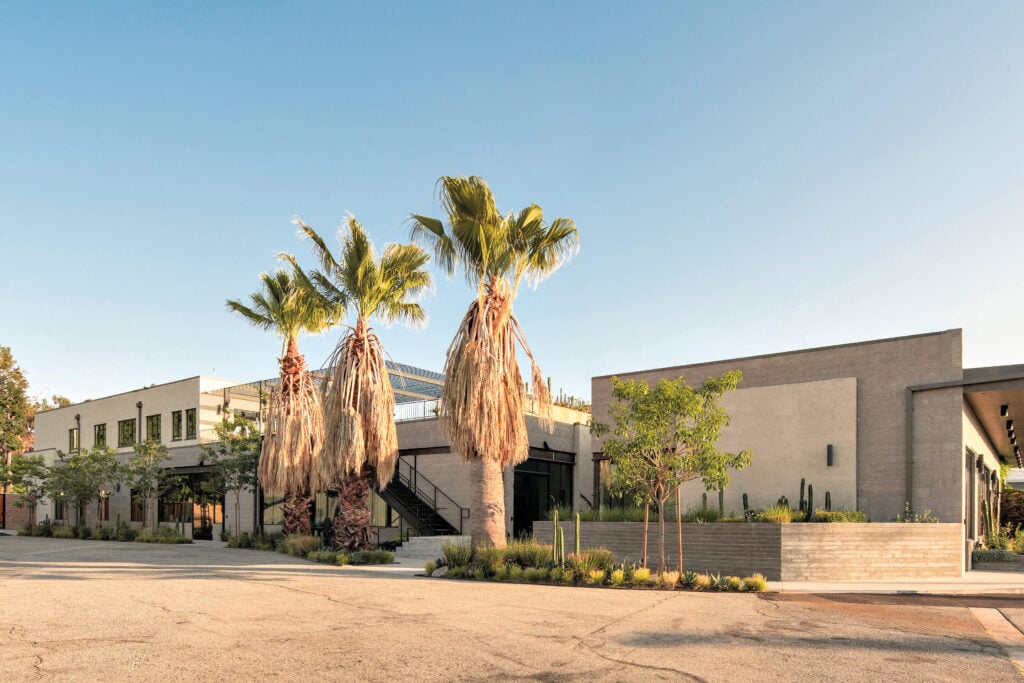
March 21, 2024
Behind the Evolution of L.A.’s Mobility Landscape
The notion that Los Angeles is slowly but surely transforming from a sprawling, car-centric city into a denser, transit-supplemented one with a far-reaching expansion of transit offerings is no longer a secret. But such increased awareness hasn’t stopped architect and editor James Sanders and global architecture firm Woods Bagot from pursuing a comprehensive examination of this new reality in Renewing the Dream: The Mobility Revolution and the Future of Los Angeles (Rizzoli Electa, 2023).
In the book’s introduction, Sanders and, later, journalist and curator Frances Anderton pinpoint how the region’s staples like single-family houses, unchecked growth, and the primacy of the car have sullied the California dream with crushing congestion, acute housing crises, and waves of environmental catastrophes. Urbanist Greg Lindsay weighs in on the technological avalanche that has set the stage for a much more comprehensive paradigm than the (albeit effective) established trifecta of transit, density, and walkable streets.

He is referring to an expanded paradigm that includes new mobility apps, app-based delivery, ride-sharing, bike-sharing, dockless scooters and bikes, autonomous vehicles, telecommuting, aerial flyways, smartphone-enhanced transit, etc.
But perhaps the book’s most revelatory element is Woods Bagot’s research finding that there are 25.4 square miles of surface parking lots in the core of the L.A. metropolitan area, and that converting even a small percentage of these for much-needed uses like housing and park space would have a remarkably positive impact with little effect on the neighborhoods’ character. Another study imagines a future for gas stations after gasoline, determining that the region’s 550 gas station sites could be transformed into 20,000 new dwellings, create 43,000 new jobs, and provide 300,000 square feet of green space. Sanders himself reimagines many of the city’s beloved prewar courtyard projects—from the likes of Irving Gill, Gregory Ain, Richard Neutra, and more—for today’s age. M
Would you like to comment on this article? Send your thoughts to: [email protected]
Latest
Profiles
Breland–Harper Mines the Past to Design a Better Future
In less than a decade, Ireland-Harper, the Los Angeles–based studio has completed over 100 adaptive reuse projects.
Products
How the Furniture Industry is Stepping Up on Circularity
Responding to new studies on the environmental impact of furniture, manufacturers, dealers, and start-ups are accelerating their carbon and circularity initiatives.
Viewpoints
The 2024 Net Zero Conference Highlights the Importance of Collective Action
Last month, leading climate experts convened at the Anaheim Convention Center to reenvision the built environment for a net zero future.





